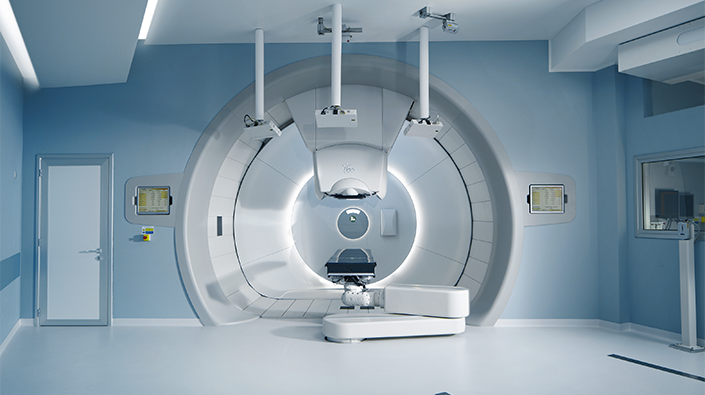Effective treatment for challenging cancers
Inova Schar Cancer Institute is the first cancer center in the Washington, DC, area to offer the sophisticated cytoreductive surgery and HIPEC treatment for advanced abdominal cancers, also known as peritoneal cancer.
Because the chemotherapy used in the treatment is heated and contained within the abdomen, HIPEC is sometimes called "hot chemotherapy" or a "chemo-bath."
The basics
Gastrointestinal and other cancers generally spread by three main routes:
- The lymphatic system
- The bloodstream
- Throughout the abdominal cavity by shedding cells that implant onto the lining of the abdominal cavity (the peritoneum)
The peritoneal route can be particularly challenging to treat because there often are multiple tumor implants that can cover large surfaces and involve several organs within the abdominal cavity. These tumor implants are also called peritoneal metastases.
Some types of cancers are particularly likely to spread in this fashion, such as appendix (appendiceal) cancer. But peritoneal metastases is also seen in stomach (gastric) cancer, colon cancer, ovarian cancer, pancreas cancer, mesothelioma and other cancers.
What is cytoreductive surgery and HIPEC
Cytoreductive surgery and HIPEC is a treatment is designed to specifically address peritoneal metastases, or peritoneal deposits on the lining of the peritoneal cavity. It consists of two main components:
- A surgical procedure that removes visible tumor deposits (cytoreductive surgery or CRS)
- A chemotherapy treatment delivered directly into the abdominal cavity during the surgical procedure
Because the chemotherapy agents are placed in the abdomen and are heated, this part of the procedure is called HIPEC (heated intraperitoneal chemotherapy). HIPEC is sometimes been referred to as "hot chemotherapy" or a "chemo-bath."
During HIPEC, the surgeon administers a chemotherapy solution into the abdomen. The solution is continuously circulated and heated by a specialized FDA-approved device for 60-90 minutes. After the 60-90 minutes, the chemotherapy solution is removed and the surgical procedure completed.
What is the rationale behind HIPEC?
HIPEC is a regional chemotherapy treatment that delivers a high concentration of chemotherapy agents within the abdominal cavity, where the cancer cells are present, while minimizing exposure to the rest of the body. Administering the chemotherapy directly into the abdominal cavity rather than intravenously helps us achieve this goal. Chemotherapy agents known to maintain a high local concentration during the 60-90 minutes of treatment are chosen for HIPEC.
Warming the chemotherapy solution achieves additional potential benefits. Laboratory studies show that cancer cells are more sensitive to heat than normal cells and may be killed more readily at an increased temperature (> 41 degrees Celsius). In addition, heating the chemotherapy solution improves the ability of the chemotherapy agents to penetrate cancer tissues and improves its ability to kill cancer cells.
What conditions can be treated with cytoreductive surgery (CRS) and HIPEC?
There is strong clinical evidence to support cytoreductive surgery and HIPEC as the treatment of choice for patients with appendix cancer and malignant peritoneal mesothelioma. Select patients with peritoneal metastases from colon cancer can also benefit from CRS and HIPEC.
HIPEC is used in other countries to treat ovarian cancer and is currently being evaluated in the United States for that use. Other types of cancers, including many rare and unusual cancers that have spread to the peritoneum, may be appropriate for this treatment.

